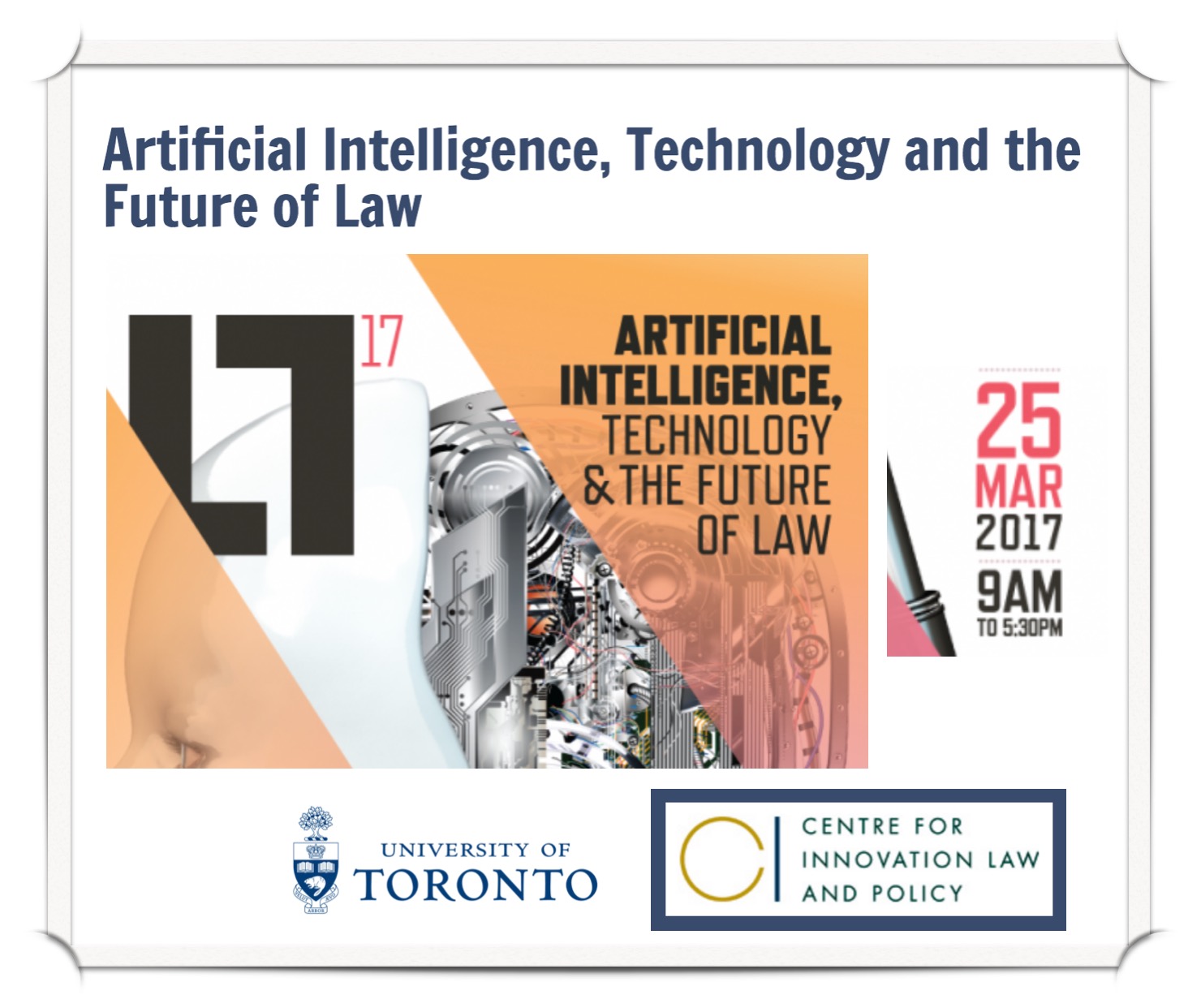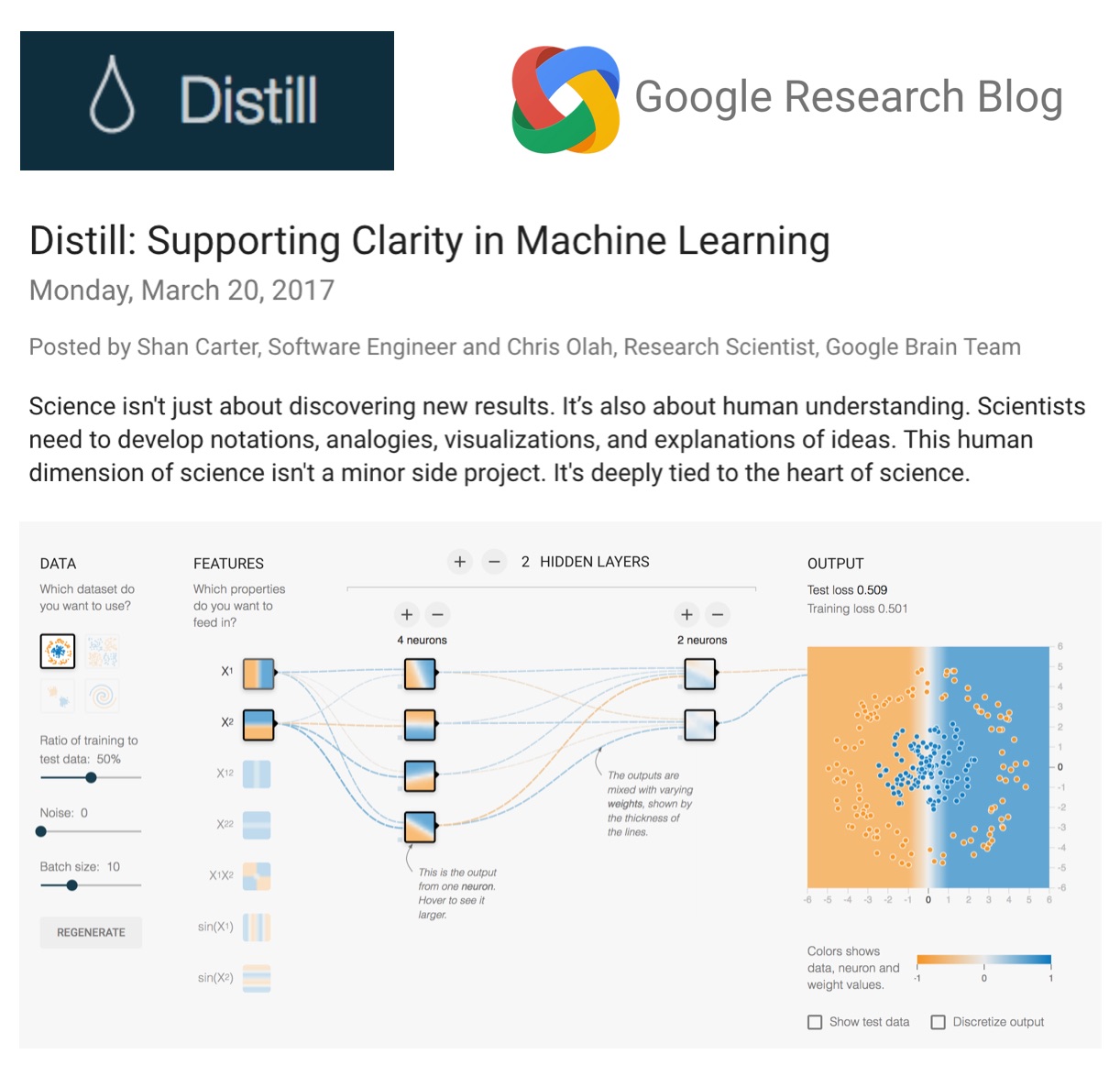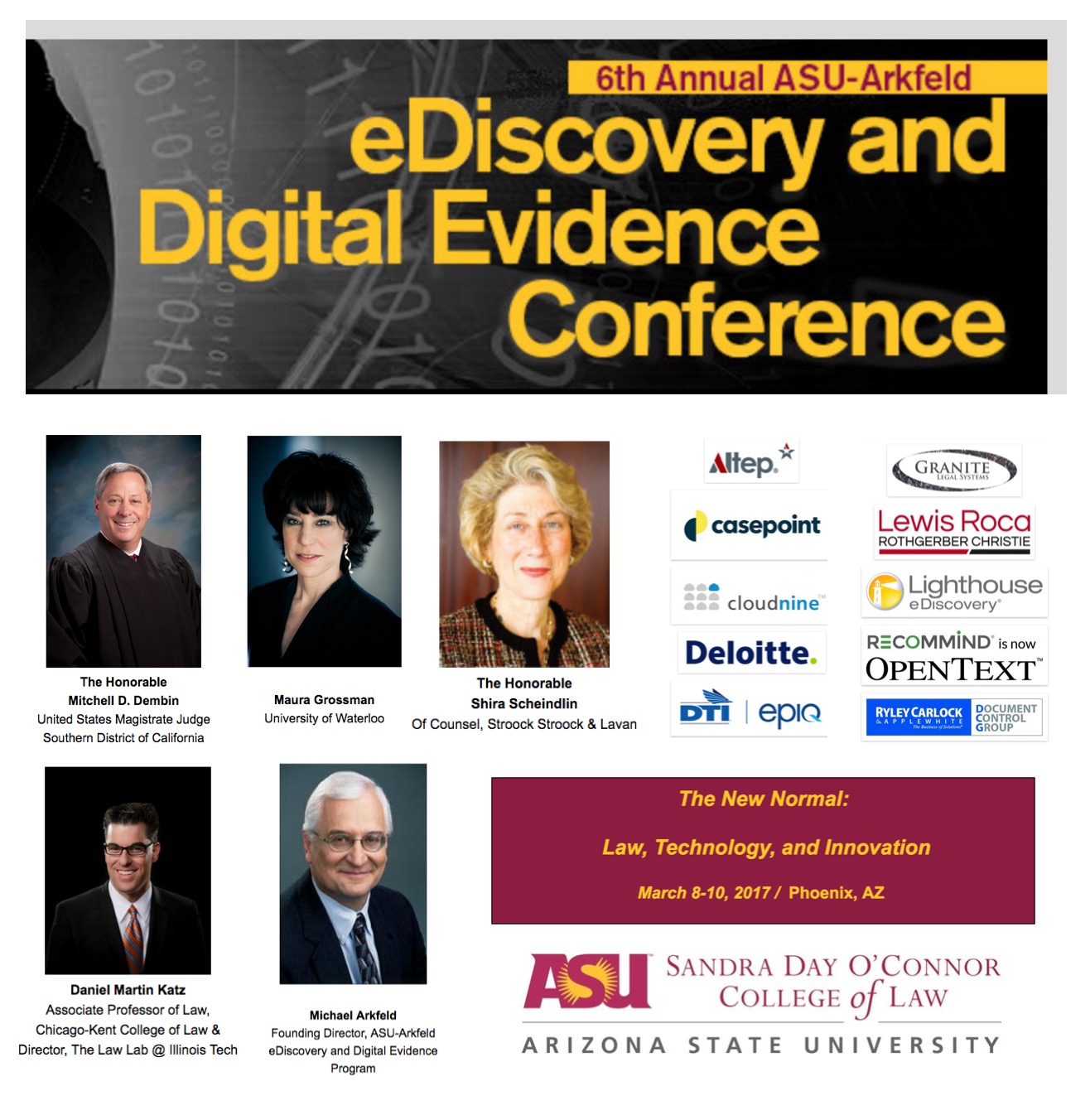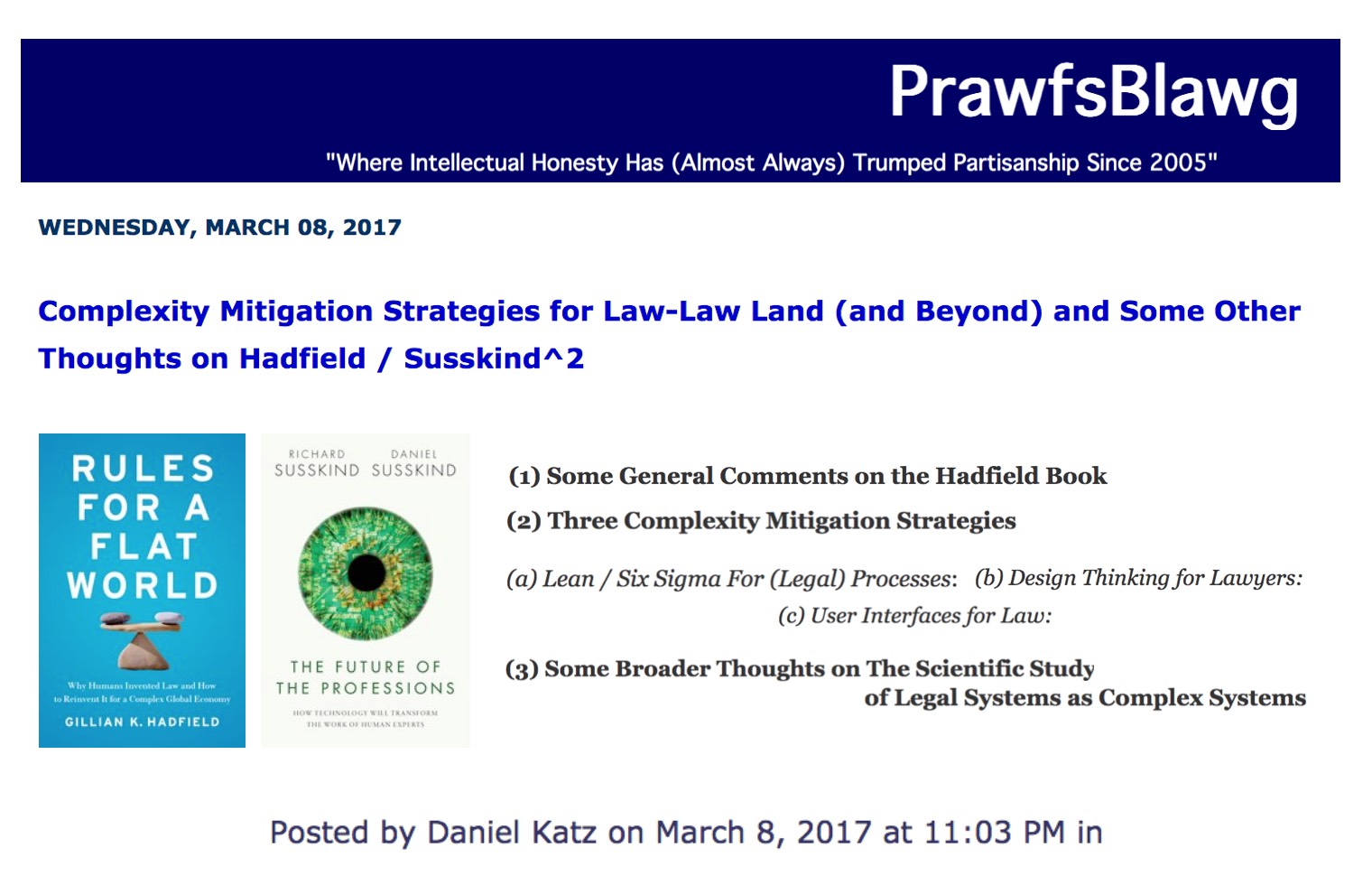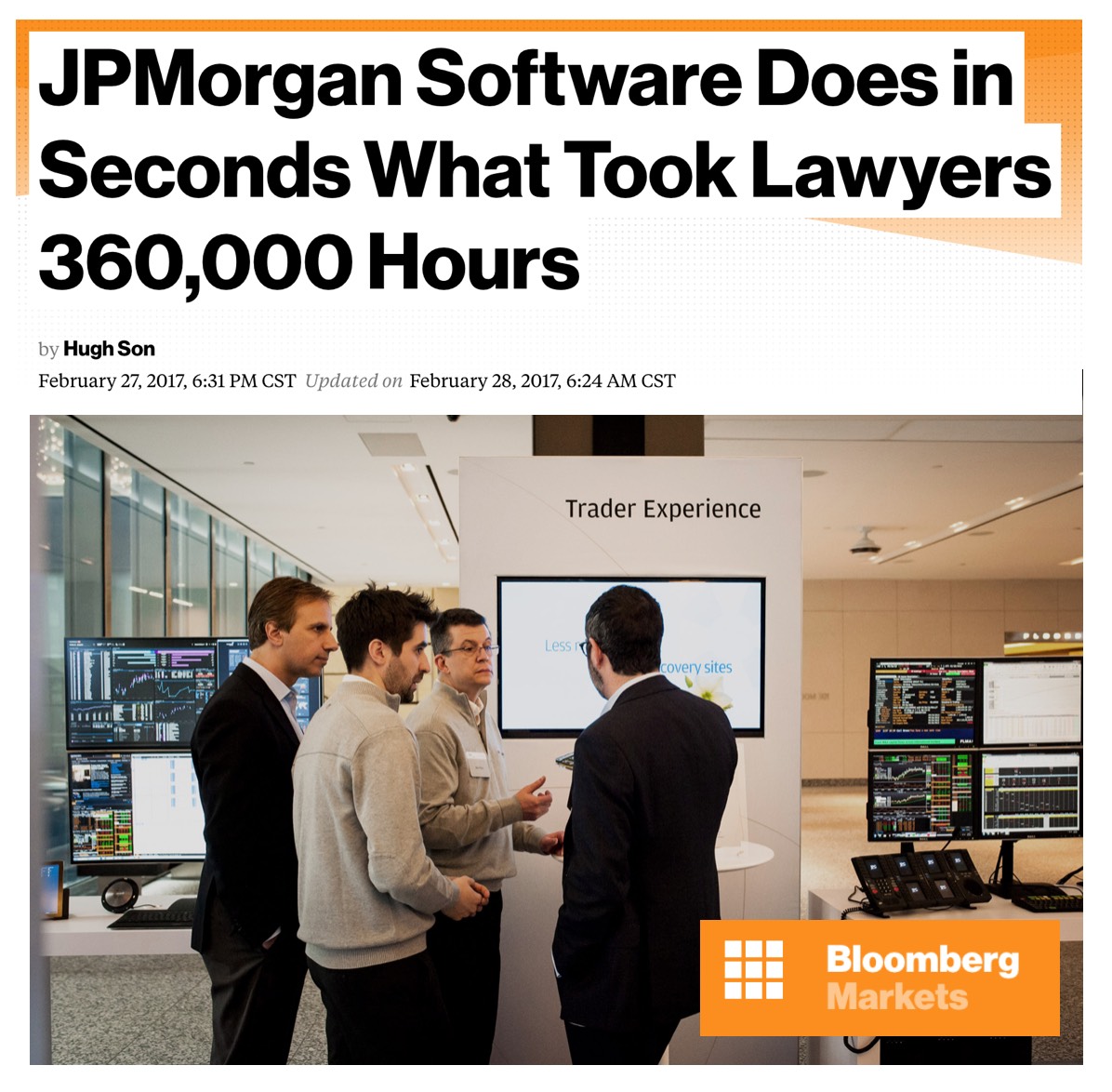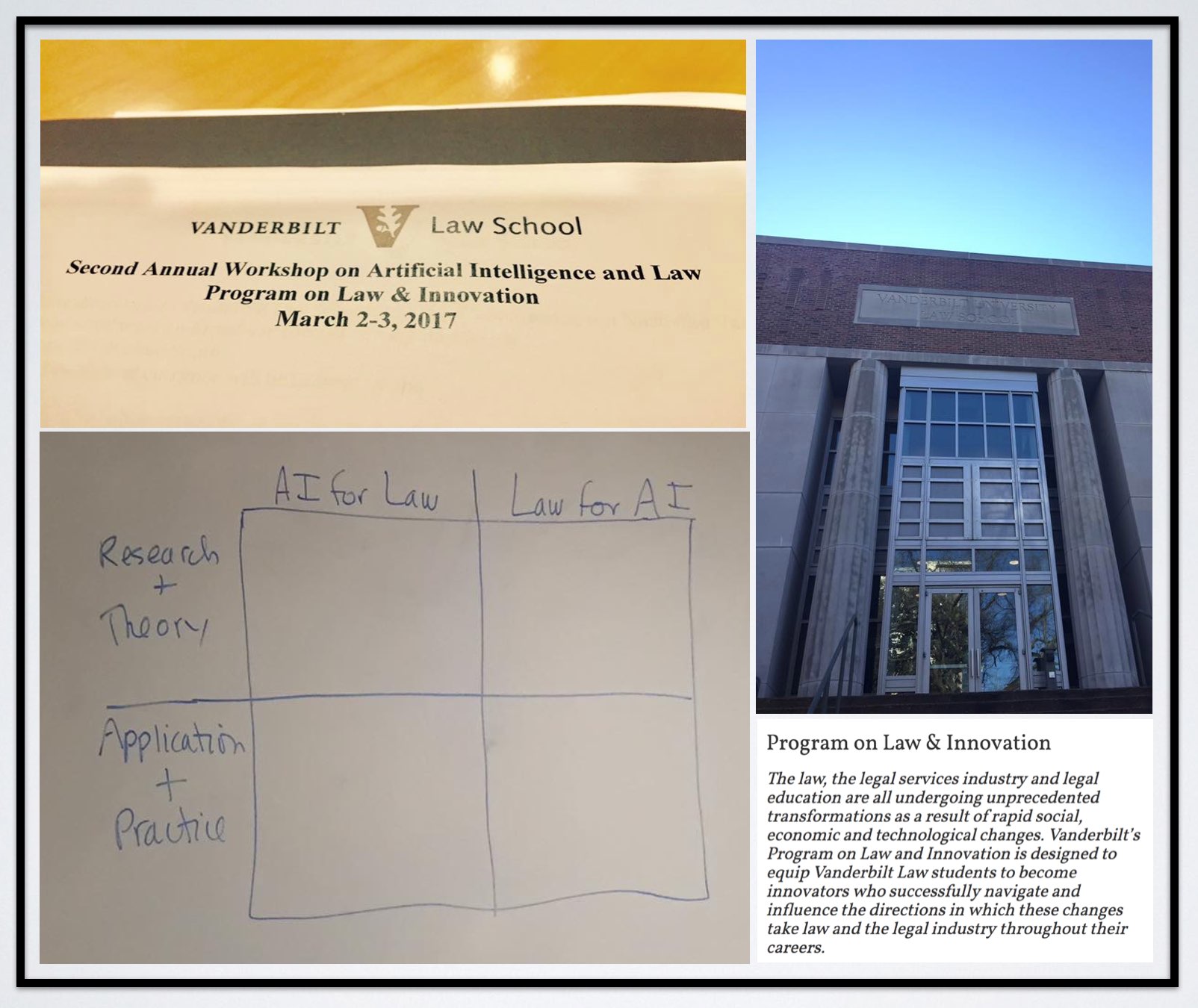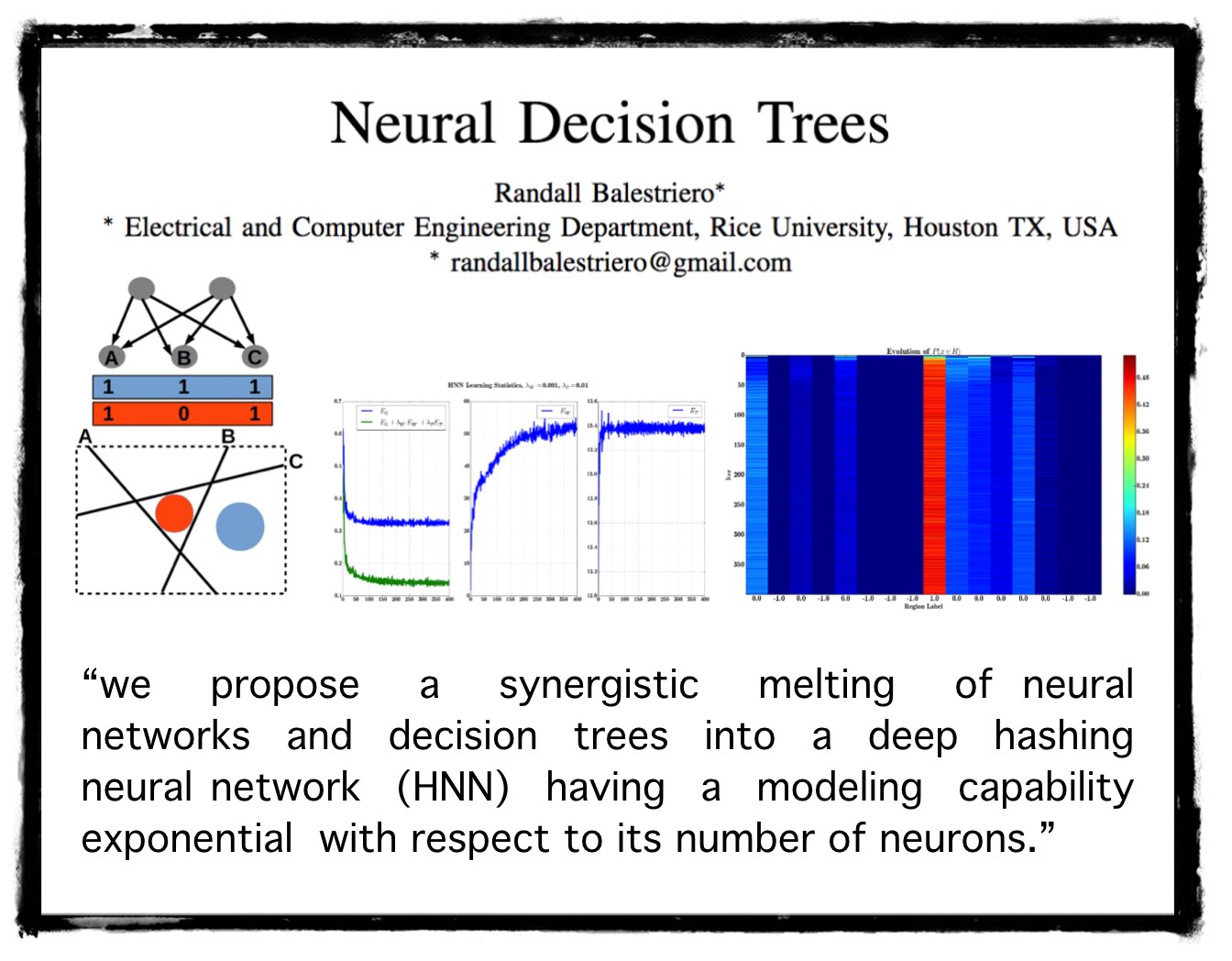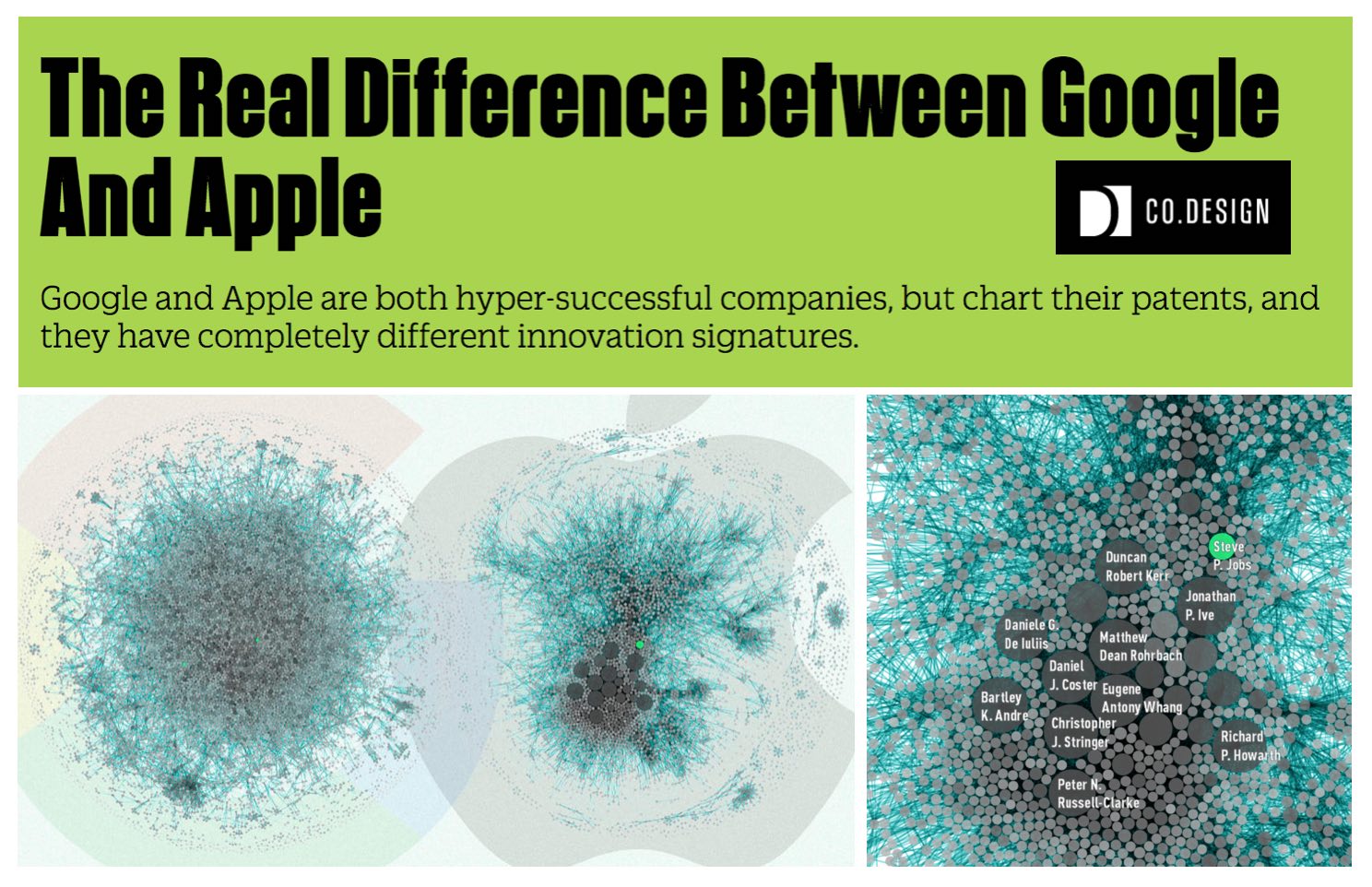–
Measuring the Temperature and Diversity of the U.S. Regulatory Ecosystem – Bommarito + Katz – Presentation at Stanford CodeX on April 5th 2017
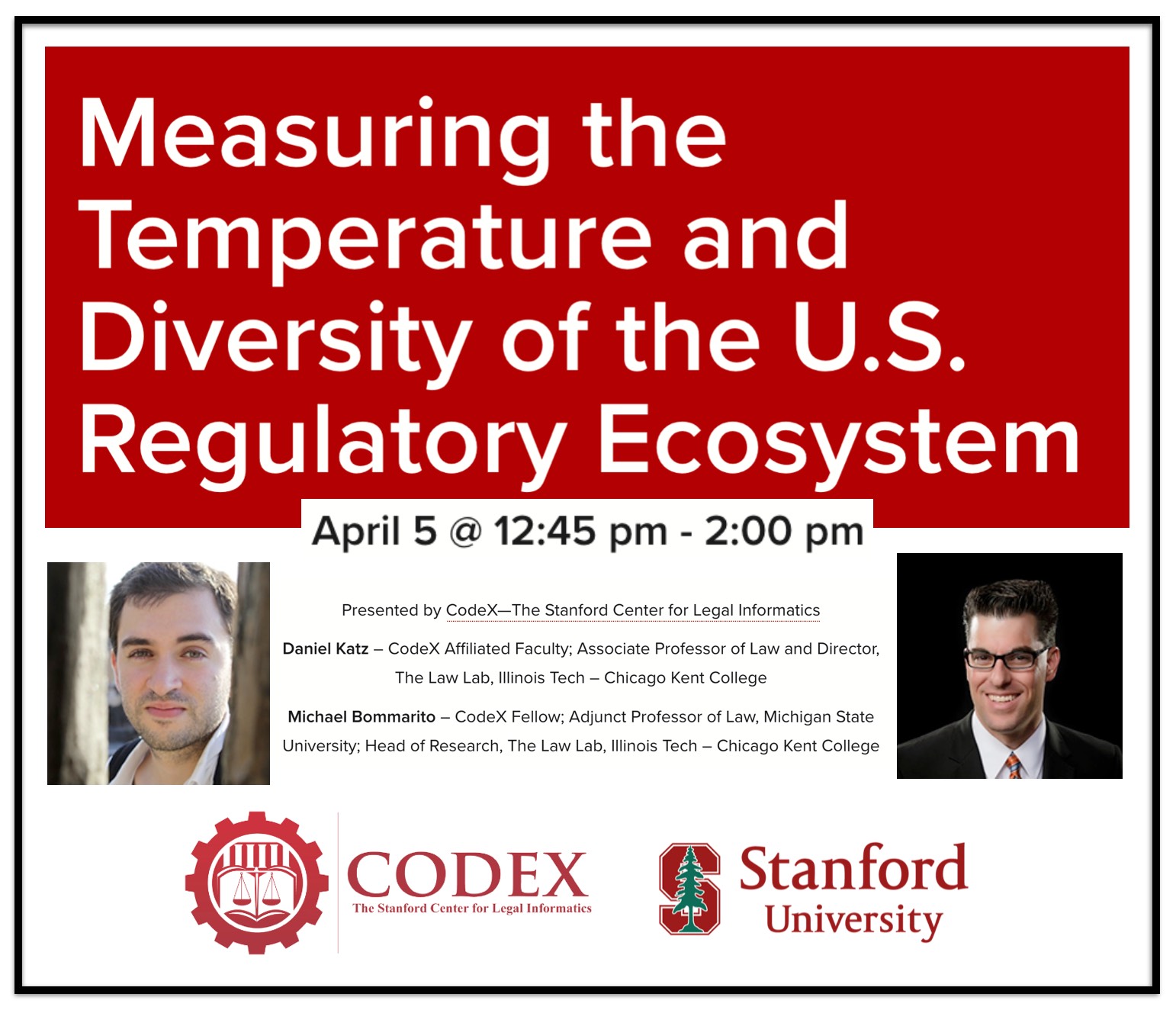
We are excited to be giving a talk at Stanford the day before the Future Law Conference. Our talk will be hosted by Stanford CodeX – The Center for Legal Informatics. If you are in the Bay Area – you can join us by signing up for free here.
The underlying paper is available here. Some starter slides here (start at slide 158) and we will be previewing our second paper in this three part series.
A Clickbaity Title but a More Reasonable Set of Content — The Robot Lawyer Thesis / Artificial Intelligence and Law in the New York Times
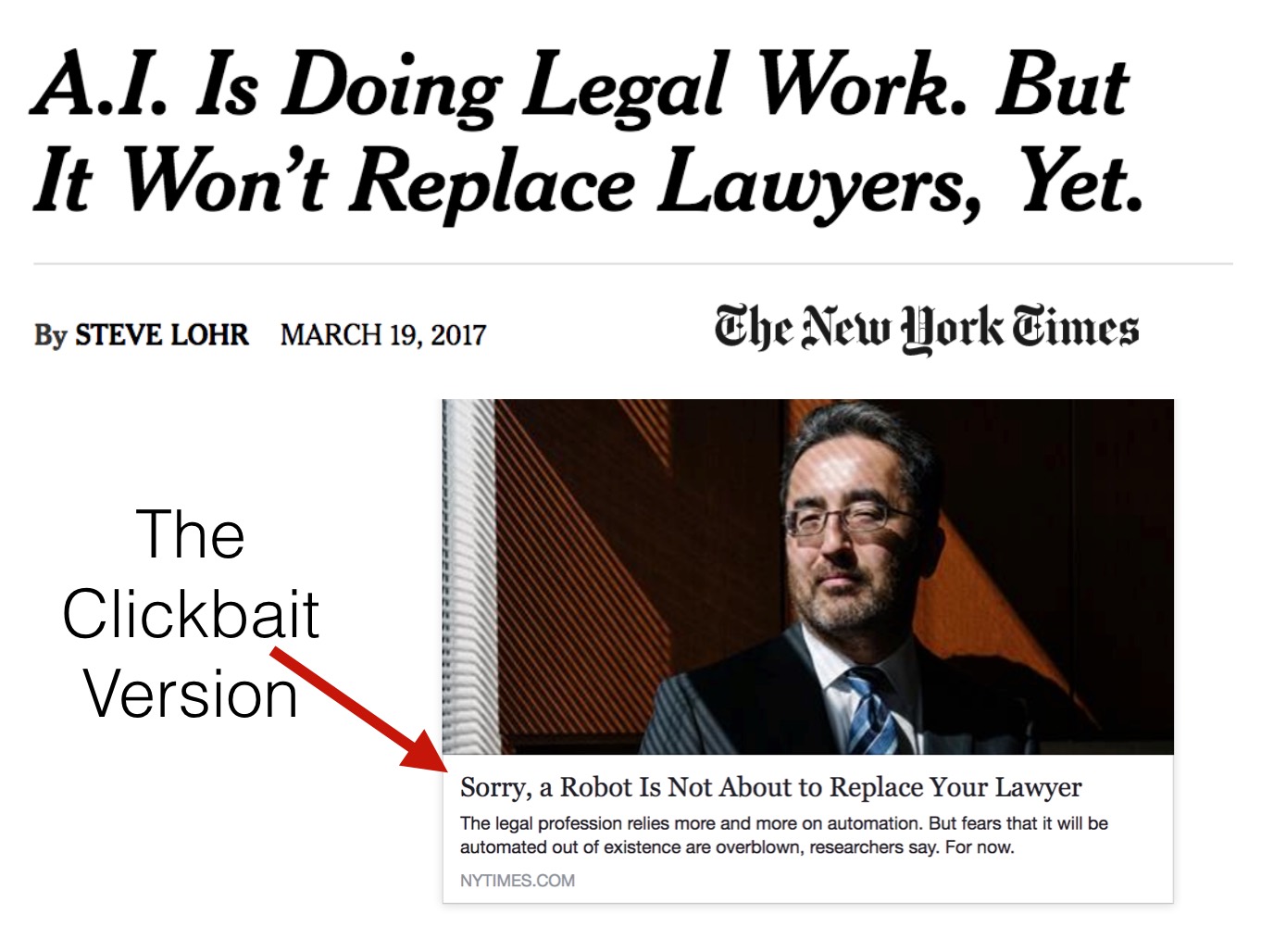 A more measured article than what we have seen lately regarding the so called ‘Robot Lawyers Thesis.’ I find it pretty funny that the NY Times Facebook link leads to the Click-Bait title but the final online version has the more measured title (see image above).
A more measured article than what we have seen lately regarding the so called ‘Robot Lawyers Thesis.’ I find it pretty funny that the NY Times Facebook link leads to the Click-Bait title but the final online version has the more measured title (see image above).
The article certainly has an Enterprise Law / Big Law undertone. If we focus on this subset of the market for legal services, there are a number of collective trends which together are transforming the market. It is the combined cocktail that is potent …
Here are five of them:
(1) Legal Outsourcing
(2) Insourcing and the Growth of Corporate Legal Departments
(3) Process Improvement (Lean / Six Sigma)
(4) Automation of Legal Tasks using A.I. (a.k.a. robot lawyers)
(5) Financialization of the Law aka #Fin(Legal)Tech
Plenty has been written about legal outsourcing, insourcing, and the growth of corporate legal departments and the application of process improvement methods (Lean / Six Sigma).
With respect to automation, it is curious to see the Times cite the Remus / Levy paper. At best, this paper is only relevant to the automation of the fraction of the work that is undertaken in Big Law (drawing from data from several years ago). They suggest an ‘automation rate’ of 2.5% per year. If that were to continue – this implies a rate for the decade of 25% just in Big Law alone. Again, this does not focus upon the other market dynamics highlighted above.
It is worth noting their data comes from a period before the implementation of #MLaaS (Machine Learning as a Service). Since its inception, #MLaaS has made A.I. tools far cheaper to custom build to problems. I have said recently that the best in legal tech has yet to be built (see slide 260).
So thanks to the NY Times for shedding light on this field. But lets remember the #RobotLawyers Thesis is only a small part of the puzzle.
As a matter of strategy, some element of the #LegalInnovation agenda should be part of the strategic portfolio of every legal organization (law firm, law school, corporate legal dept, etc.) Why? Because those who do so can increase their standing in the relevant market in question. Only those who use the newest and best tools available will thrive in an ever-changing market.
Artificial Intelligence and Law : A Six Part Primer – Professor Daniel Martin Katz (Updated Version 03.17.17)
An Updated Version of Artificial Intelligence and Law : A Six Part Primer
LegalTech & Innovation Talks – March 16 at Skadden – ABA Techshow Week (The Chicago Legal Innovation + Technology MEETUP)
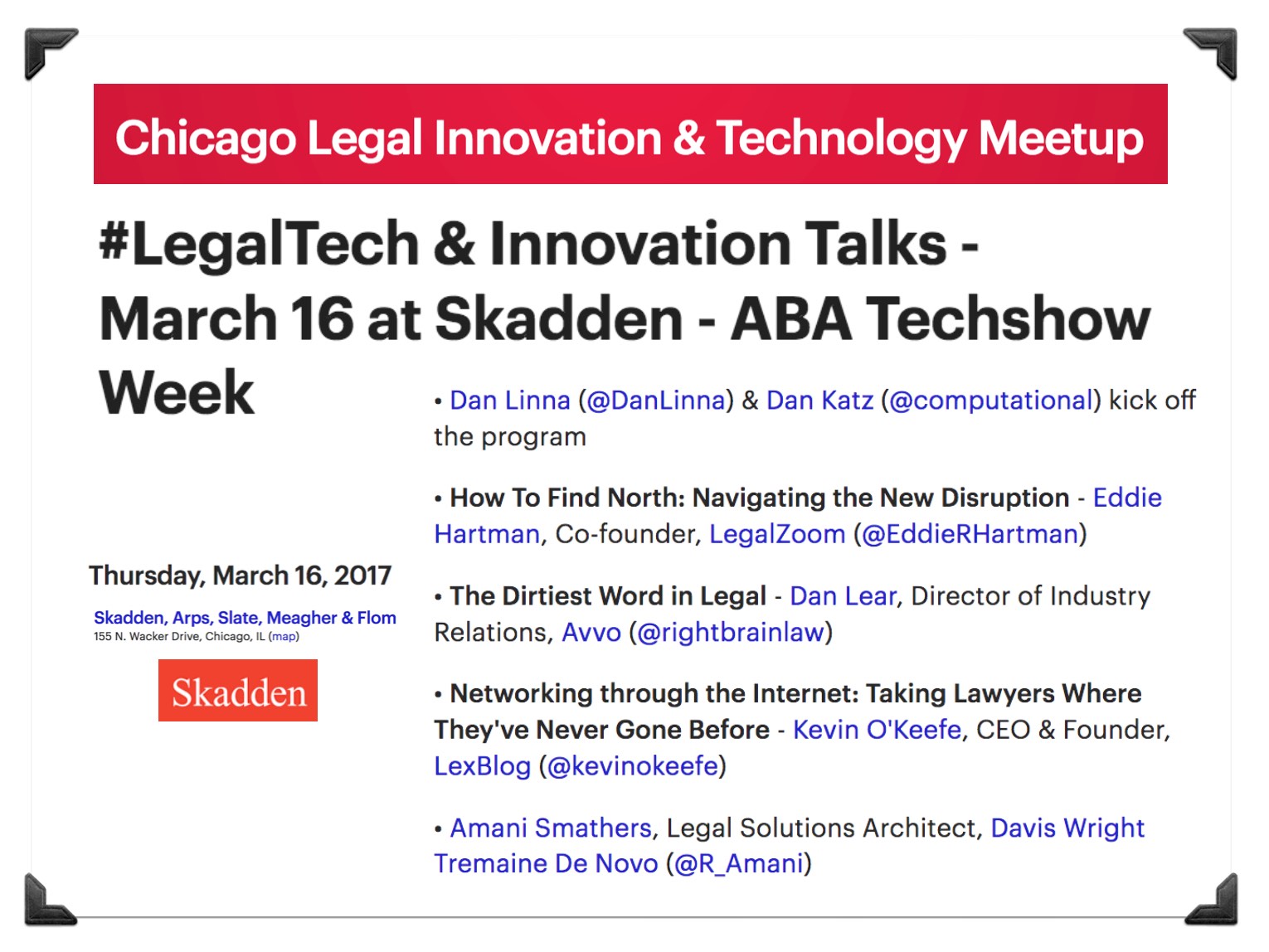 Join us at Skadden during ABA Techshow Week. We will begin at 5:00 p.m. with networking and kick off the program at 5:30 p.m.
Join us at Skadden during ABA Techshow Week. We will begin at 5:00 p.m. with networking and kick off the program at 5:30 p.m.
Dan Linna (@DanLinna) & Dan Katz (@computational) kick off the program
How To Find North: Navigating the New Disruption – Eddie Hartman, Co-founder, LegalZoom (@EddieRHartman)
The Dirtiest Word in Legal – Dan Lear, Director of Industry Relations, Avvo (@rightbrainlaw)
Networking through the Internet: Taking Lawyers Where They’ve Never Gone Before – Kevin O’Keefe, CEO & Founder, LexBlog (@kevinokeefe)
Talk Title TBD – Amani Smathers, Legal Solutions Architect, Davis Wright Tremaine De Novo (@R_Amani)
Seyfarth Grows Revenue, Profits as Lean Investment Pays Off (via The American Lawyer)
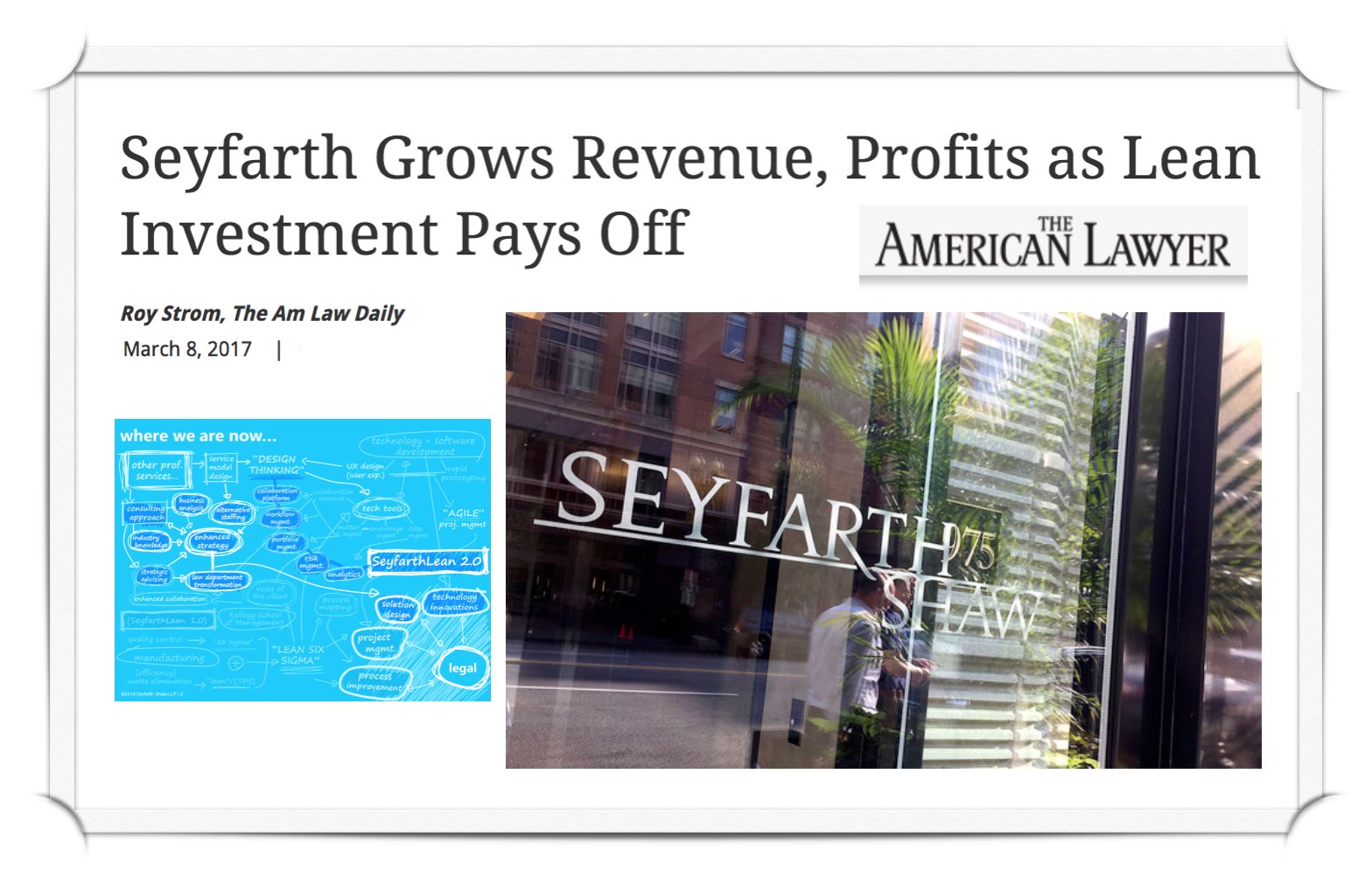 So happy to have the chance to teach with and learn from Team Seyfarth Lean – Kim R. Craig, Larissa Kruzel, Kyle Hoover and the rest of the team!
So happy to have the chance to teach with and learn from Team Seyfarth Lean – Kim R. Craig, Larissa Kruzel, Kyle Hoover and the rest of the team!
MD Anderson Drops IBM Watson – A Setback For Artificial Intelligence In Medicine ?
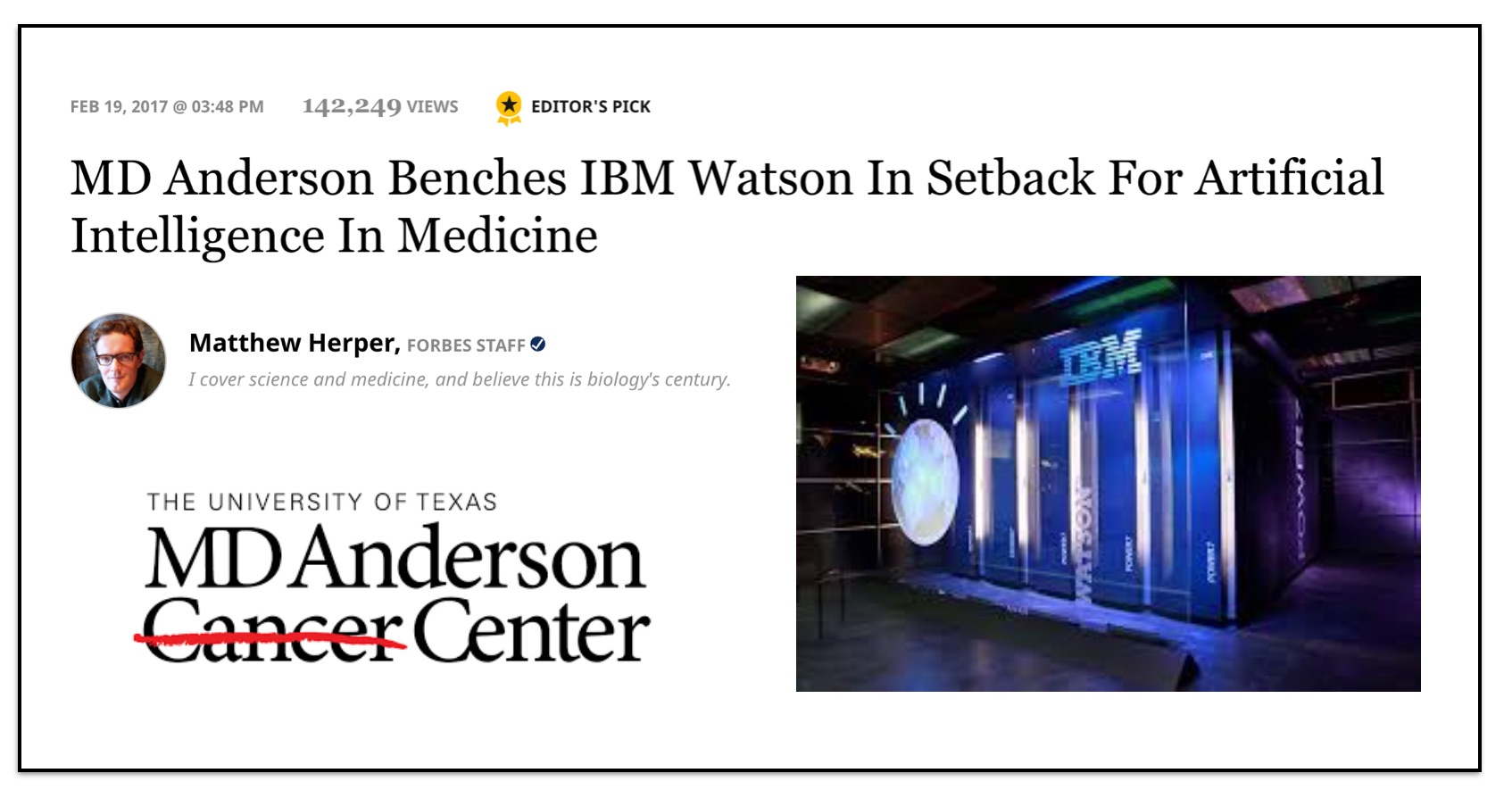 Not sure this is actually a “set back for AI in Medicine.” Rather, long story short — it ain’t 2014 anymore … as we discuss in our talk – Machine Learning as a Service : #MLaaS, Open Source and the Future of Legal Analytics – what started with Watson has turned into significant competition among major technology industry players. Throw in a some open source and you have some really strong economic forces which are upending even business models which were sound just three years ago …
Not sure this is actually a “set back for AI in Medicine.” Rather, long story short — it ain’t 2014 anymore … as we discuss in our talk – Machine Learning as a Service : #MLaaS, Open Source and the Future of Legal Analytics – what started with Watson has turned into significant competition among major technology industry players. Throw in a some open source and you have some really strong economic forces which are upending even business models which were sound just three years ago …
From the story — “The partnership between IBM and one of the world’s top cancer research institutions is falling apart. The project is on hold, MD Anderson confirms, and has been since late last year. MD Anderson is actively requesting bids from other contractors who might replace IBM in future efforts. And a scathing report from auditors at the University of Texas says the project cost MD Anderson more than $62 million and yet did not meet its goals. The report, however, states: ‘Results stated herein should not be interpreted as an opinion on the scientific basis or functional capabilities of the system in its current state’….”

